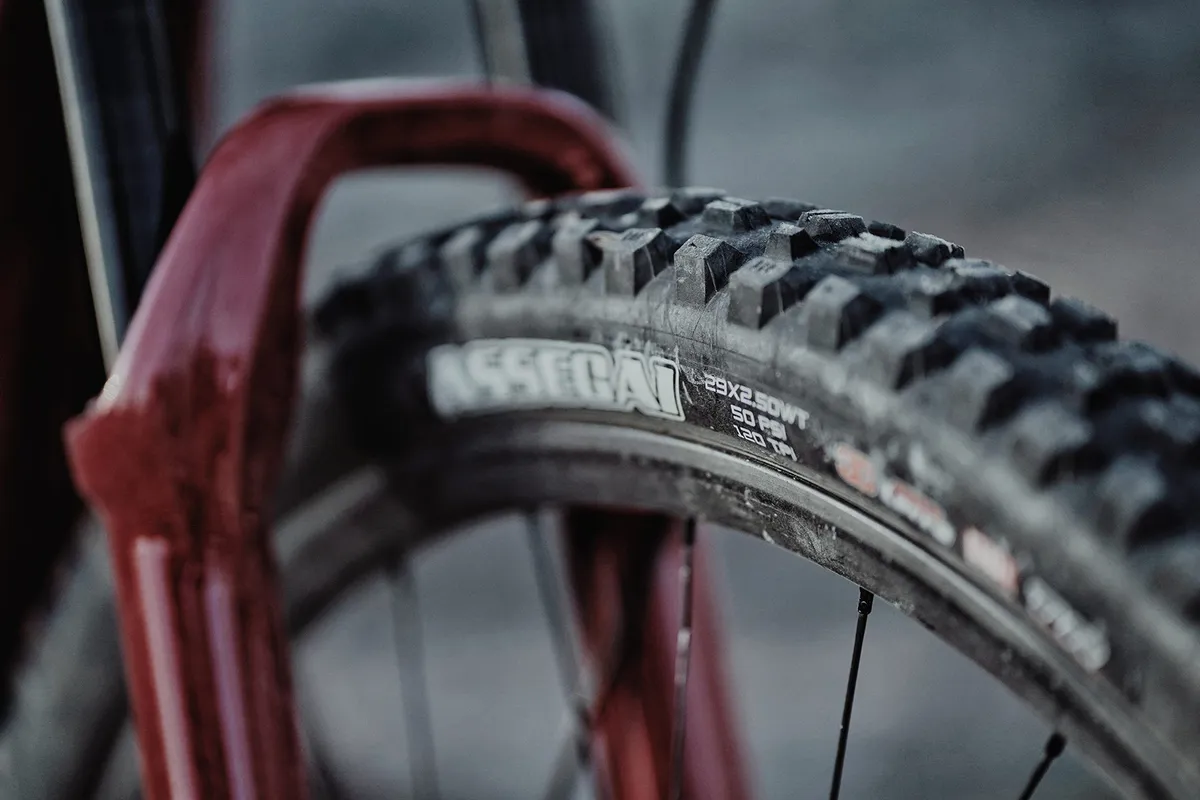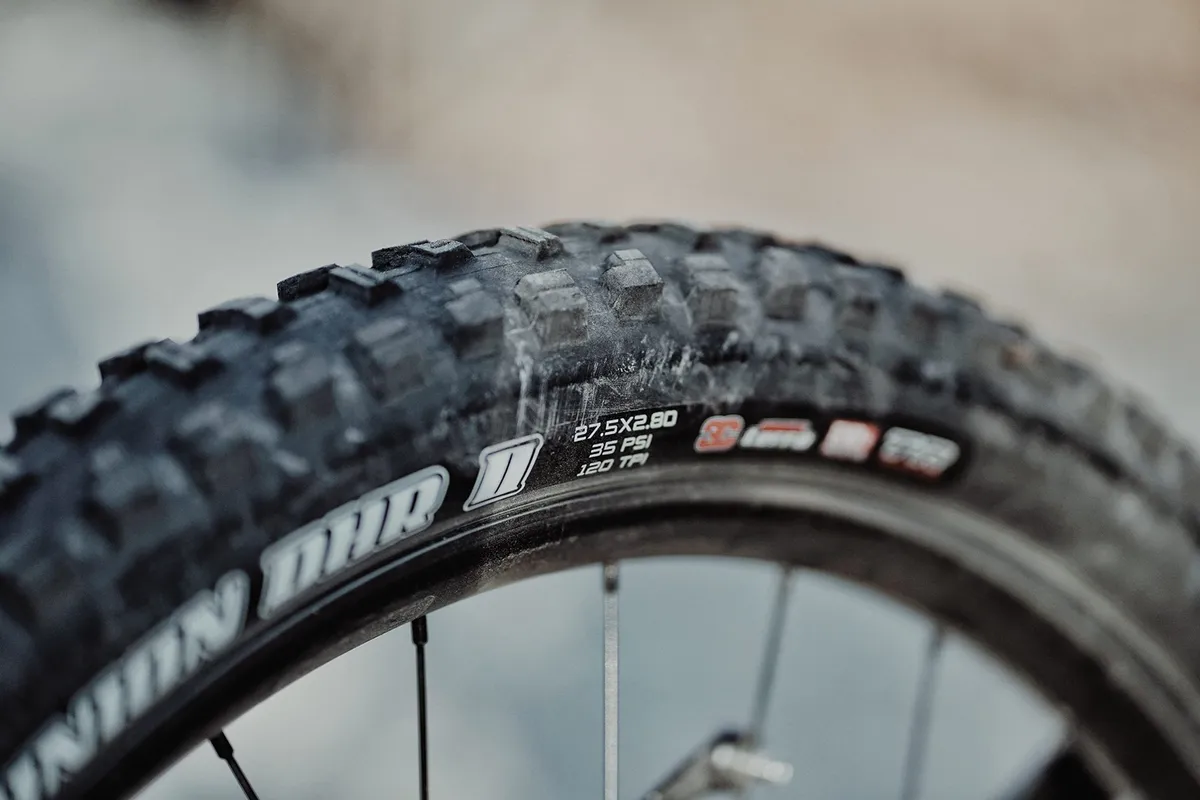Lapierre has released its latest enduro-focused eMTB, the Overvolt GLP2, which sees an an update to the original Overvolt for the first time in four years, with 10-time world champion and Lapierre’s race team manager Nico Vouilloz at the helm of the bike’s development.
Lapierre has taken advantage of the new motor architecture of the fourth generation Bosch Performance CX motor to give the latest bike fully up to date geometry.
The bike sits alongside the lighter-weight and super-versatile Fazua powered eZesty, which I reviewed last year.
Lapierre Overvolt GLP2 Team frame and suspension details
The Overvolt GLP2 has a full-carbon frame that delivers 160mm of suspension travel, matched with a 160mm fork up front.
Lapierre uses a four-bar suspension linkage to deliver the travel, with the kinematics designed to give lots of traction on steep climbs and mid-levels of progressivity for control over rough terrain.
The swing-link main pivot sits just in front of the seat tube and, combined with the battery's location, the seat tube’s length is interrupted.
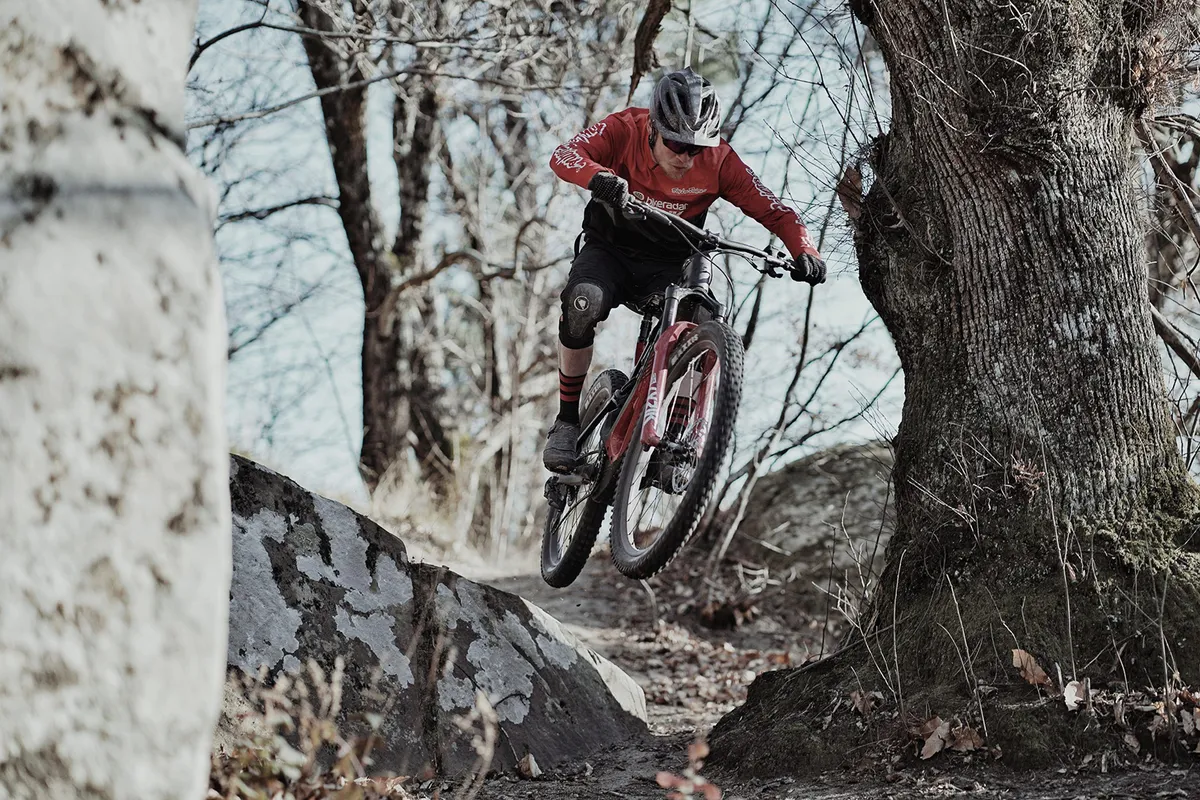
According to Lapierre, weight distribution is key for decent handling, so rather than use an internally integrated PowerTube battery, Lapierre has kept a ‘standard’ external 500Wh battery because this can be mounted right over the motor to give a more central centre of mass.
A side benefit of this plastic encased battery over the metal encased PowerTube is a considerable weight saving.
Cables run internally, as you’d expect, and there’s integrated down tube and chainstay protection, as well as a custom chainguide and motor protection to finish the frame off.
The hole below the battery that's in front of the motor was originally designed to hold a storage compartment, but Lapierre wasn’t happy with its design, which scratched the paintwork, so for now this feature isn’t included.
Finally, there are no bottle cage bosses on the bike.
Lapierre Overvolt GLP2 Team geometry
The updated Bosch motor allows Lapierre to run much shorter chainstays than the previous generation bike, down to 440mm.
This enables it to shape the bike with much more contemporary geometry: a longer front end, slack head angle and steep seat angle. Certainly on paper, there shouldn’t be any excuses when it comes to the shape of the bike.
The bottom bracket has been dropped fairly low, but with technical climbing being a key feature for the bike's performance, Lapierre didn’t want to drop it so low that crank strikes could be a problem, even with the 160mm cranks found on the smaller sizes.
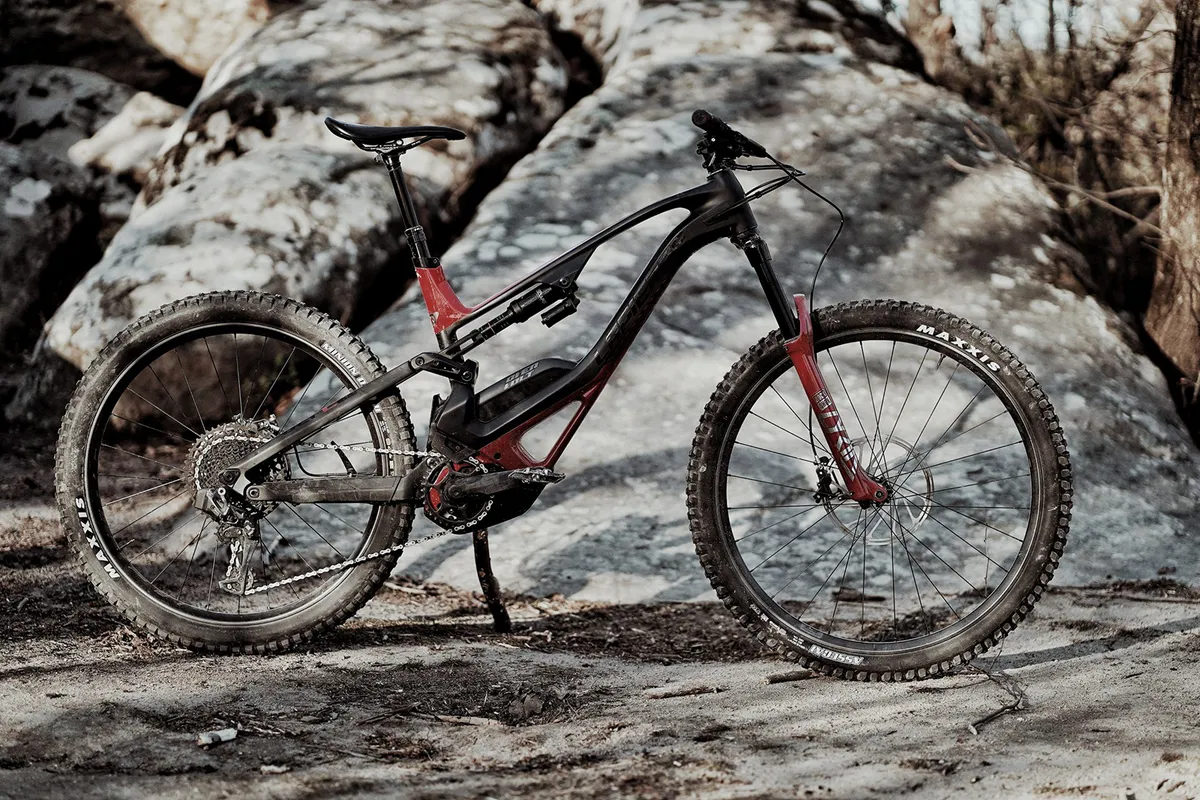
- Sizes (*tested): S, M, L*, XL
- Seat tube: 460mm
- Top tube: 642mm
- Head angle: 65 degrees
- Seat angle: 76 degrees
- Chainstay length: 440mm
- Head tube: 120mm
- Bottom bracket drop: 15mm
- Reach: 484mm
- Stack: 634mm
Lapierre Overvolt GLP2 Team specifications
The Team model is the top-line version of the Overvolt GLP2, with an Elite version coming in a touch cheaper – you can see the full range and spec details in our news story.
Up front you get a 160mm RockShox Lyrik Ultimate fork, while the rear suspension is controlled by a Super Deluxe Select+ shock.
SRAM provides wireless AXS X01 shifting over a relatively heavy and narrower 11-50t range NX Eagle cassette that's set around an E13 alloy crank and chainring.
SRAM also furnishes the bike with G2 RSC brakes, which is an odd choice in my opinion on an enduro-focused bike when the Code exists in SRAM’s lineup, even if a 220mm rotor is bolted to the front wheel.
Carbon rims are shod in wide, sticky Maxxis rubber, with a 2.6in 29er tyre on the front and a 27.5 x 2.8in tyre on the rear.
Finally, Lapierre provides the bulk of the finishing kit, from cockpit to seatpost and saddle.
Lapierre Overvolt GLP2 Team first ride impressions
I rode the Overvolt at the launch of the bike in southern France on rocky, steep, technical tracks, with plenty of roots thrown in for good measure.
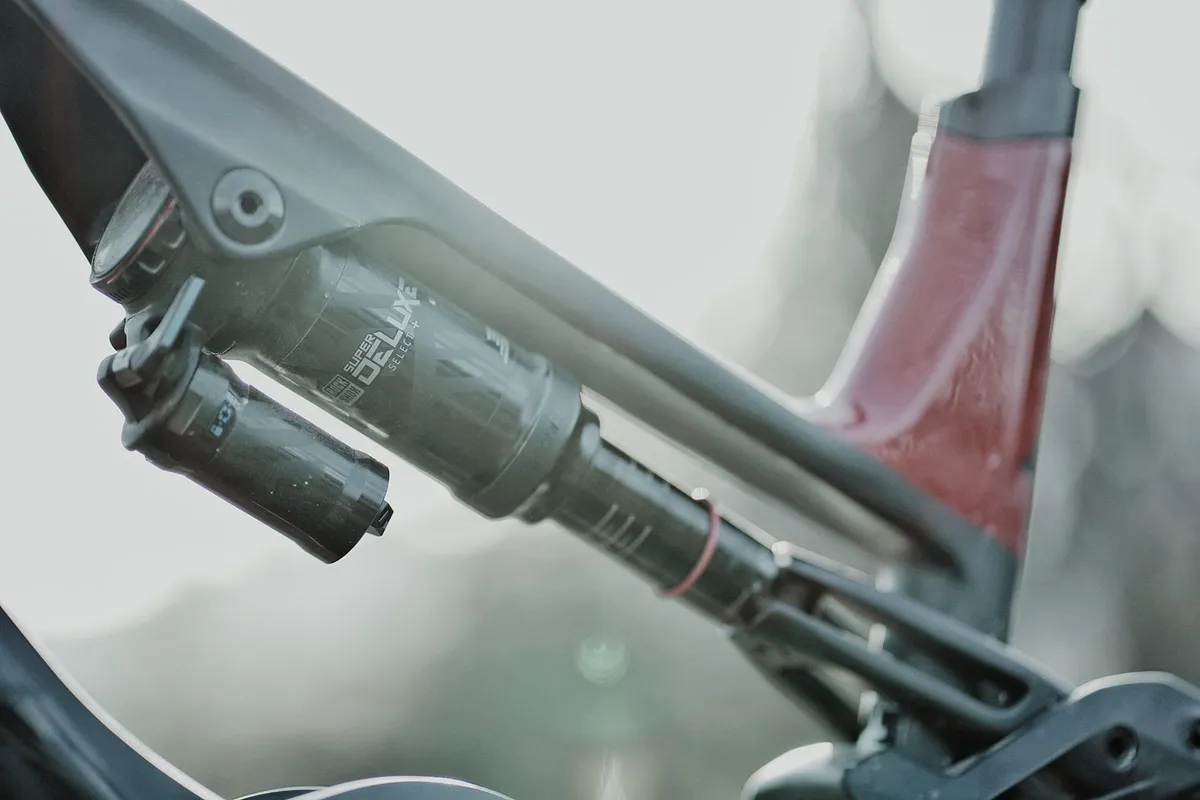
I had no real issues with setting the bike up. I was running around 29 per cent sag, within Lapierre’s relatively tight recommended 28 to 32 per cent range, and with relatively little compression or rebound damping on either suspension unit, as is my preference.
Tyres were run at around 23psi in the front and 19psi at the back, with a tyre insert to further protect the rear rim and tyre.
Lapierre Overvolt GLP2 Team climbing performance
While only a relatively subtle difference in battery placement over a ‘regular’ down tube-based battery, the centralised weight is noticeable as soon as you point the Overvolt up a steep climb.
This is because the front end of the bike feels significantly lighter than many of its competitors, with a lightness of steering that helps keep the bike feeling nice and agile, and more than happy to attack technical sections of a climb where a step or tight corner requires said agility.
On the steepest of tracks there’s certainly a need to consciously weight the front wheel a little in order to keep it pointing where it should.
Arguably, a touch more length on the rear stays wouldn’t be a bad thing, helping better centre weight between the axles, but, overall, I think Lapierre has got the rear-end length right for better all-round handling.
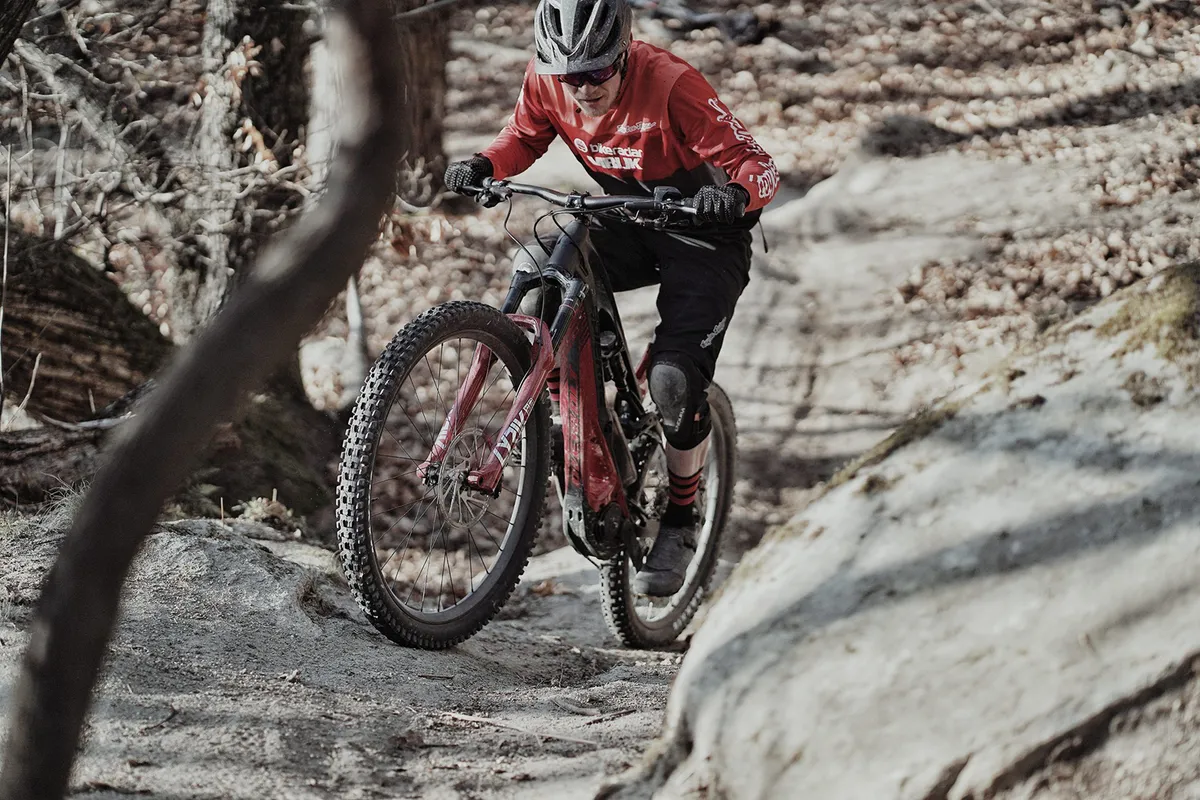
With the front wheel going where you want, it’s down to the rear to provide the drive, and fortunately the 2.8in Minion DHR does just that.
Adding a tyre insert on the rocky tracks I tested the bike on was certainly a good shout, and something I would recommend for more aggressive riders, those riding over harsh terrain or those with a higher body weight – there’s little downside to carrying that extra weight but a big downside to a cracked carbon rim.
If you're really hard on kit, then a DoubleDown (or any other DH casing tyre) would be a good upgrade, though you'd have to drop to a narrower tyre because currently there are few 2.8in tyres with such a casing.
The rear suspension doesn’t have quite the same anti-squat as some un-assisted bikes, but I don’t think this is an issue, given the additional power from the motor. It leaves the suspension active enough to track the ground confidently, letting the tyre eke out as much grip as it can.
If you stand up and start trying to tank it along, there’s some pedal bob, but the flip side is that the bike feels smooth through the cranks when the bike reaches the deeper end of its stroke.
The 165mm cranks seem pretty spot on too. While there were some inevitable crank strikes, it was far from common during testing, especially considering the terrain.
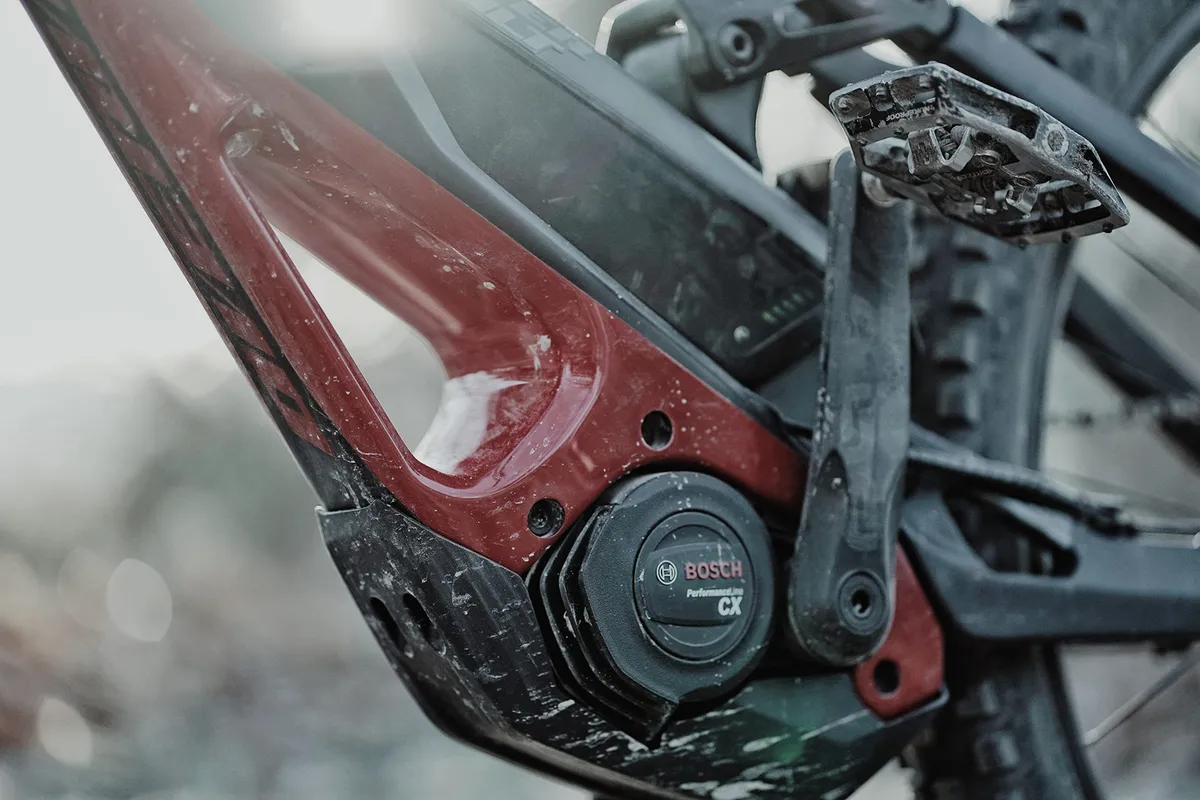
Bosch’s Gen 4 motor is an interesting one. Its power delivery, once you’ve got the feel for it, is generally very good, especially in the more adaptive EMTB mode, in which I spent most of my time. The motor seamlessly matches the effort you’re putting in, giving you the fine control needed to regulate any rear wheel spin.
It does, however, give a fair old kick when starting off at times. If you can use this to your advantage, then that’s great, but occasionally it just wanted to spit loose dirt from under the tyre or loop the front wheel out when starting on something really steep.
A 500Wh battery isn’t the most generous in range – in previous testing, using EMTB and Turbo modes, I tend to bank on around 1,000m vertical of Welsh hillside climbing from said battery size in typical UK conditions and an 80kg rider.
However, this Team model comes with an additional 300Wh battery and a pack designed to carry it, which will no doubt aid the bike’s range considerably, so long as you’re happy carrying batteries.
Lapierre Overvolt GLP2 Team descending performance
The light feeling that impresses on the climbs continues on the descents too, with the 21.49kg eMTB feeling as agile as they come.
It might not be the lightest eMTB I've ridden with a full-power motor and battery – that honour goes to the Mondraker Crafty Carbon – but Lapierre’s theory about keeping the weight low and central certainly seems to hold water.
The bike is happy to change direction easily, needing little effort to swing from one shoulder tread to another. Meanwhile, the front end’s relatively low weight and shorter chainstays make it easier to pop the front wheel up in to the air to clear obstacles ahead than a heavier or less-well-balanced bike might.
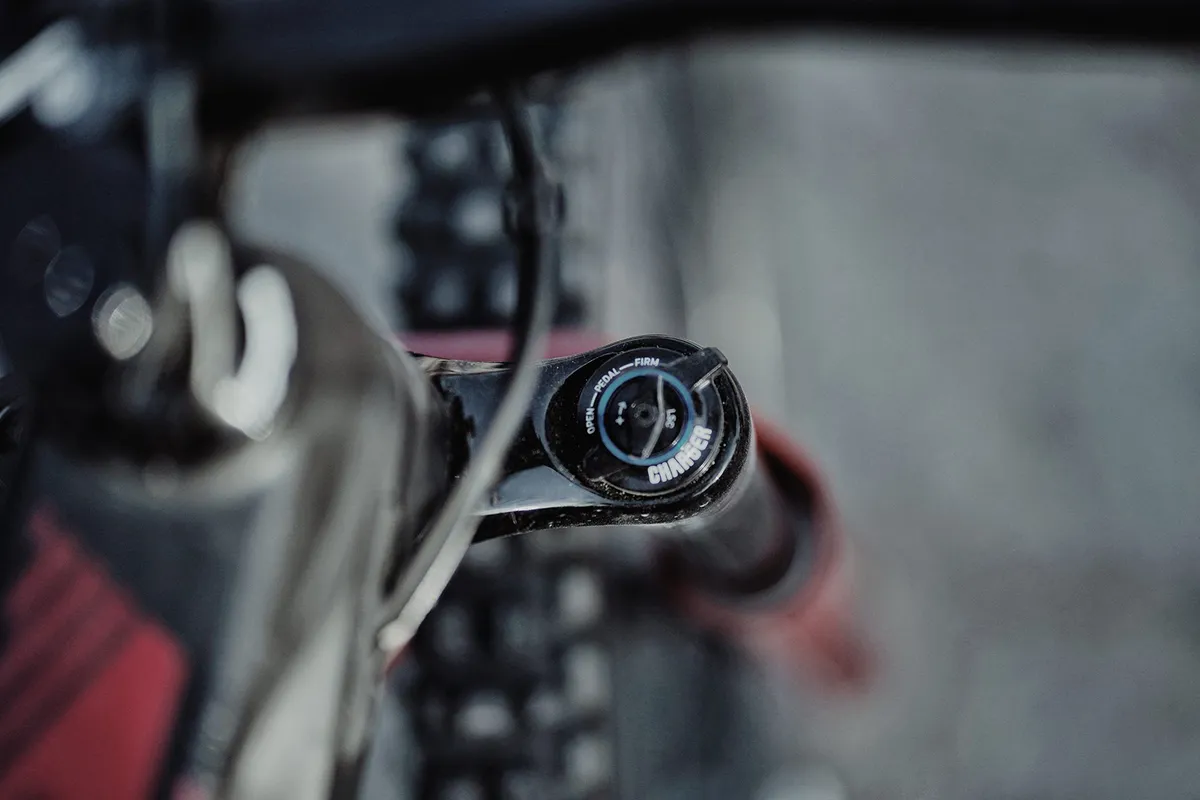
Other aspects of the bike’s shape impressed too. The ranging front-end punts the front axle well out in front of your body for plenty of confidence on steep descents, as well as allowing you to easily push the front tyre into the ground to maximise grip.
Drop your heels and push through the low bottom bracket and the bike happily carves through a corner and feels confident when traction breaks.
Though the rear shock isn’t ‘Ultimate’ level like the fork, both suspension units deliver a very smooth feeling. The Lyrik is one of our favourite forks and the rear-end felt largely smooth and composed during testing.
The linkage doesn’t give the most progression, but there’s enough ramp in the shock to prevent harsh bottoming out.
Furthermore, the low-ish anti-squat figures mean little in the way of pedal feedback when riding over choppy terrain.
There is, however, enough support in the system to allow effective pumping, whether that's over rollers to generate speed or into the face of a jump to get pop off the lip.
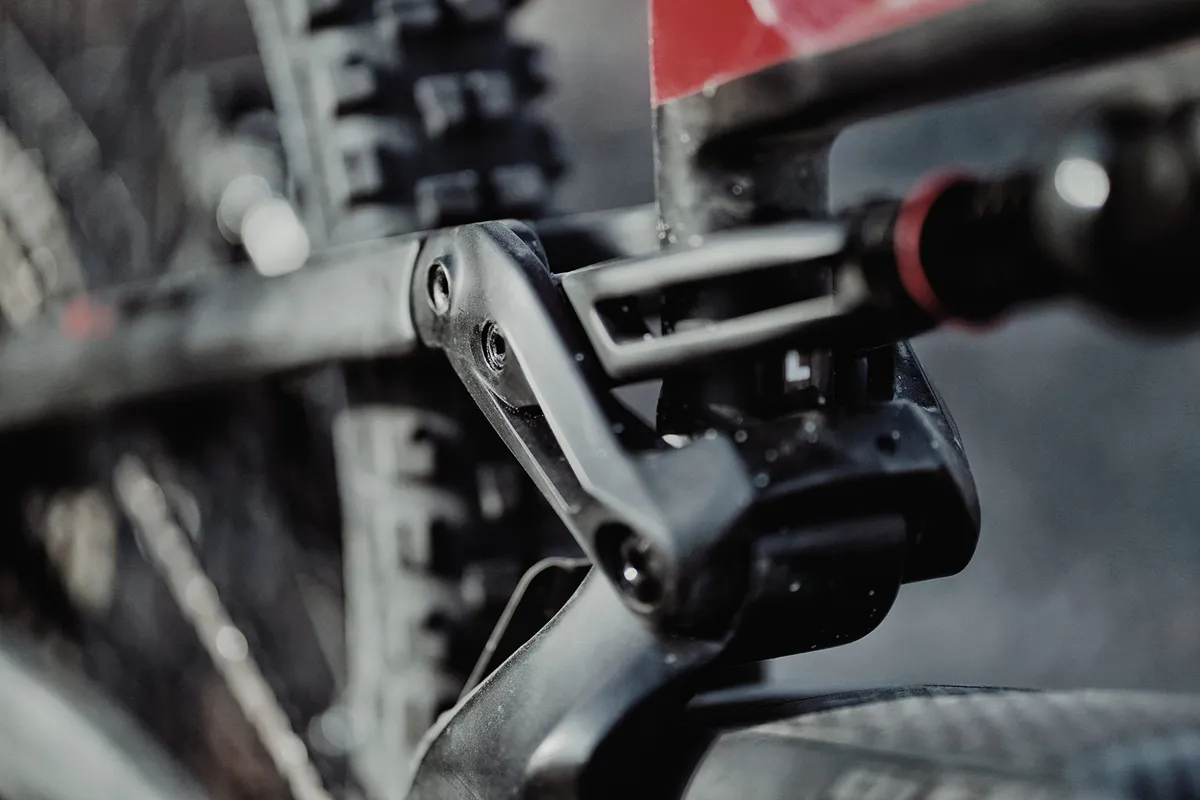
It’s not all perfect, though. There are a couple of what I consider to be odd spec choices on this enduro-focused race bike.
For starters, the 760mm bars feel narrow. Wider bars allow you finer control and better leverage over the steering. While bar width is a personal preference, and you can chop down bars, it’s very tricky to make them wider without replacing them.
Likewise, the interrupted seat tube means fitting longer droppers may not be an option. The Small bike comes with only a 100mm drop, the Medium a 125mm drop and the Large and XL a 150mm drop.
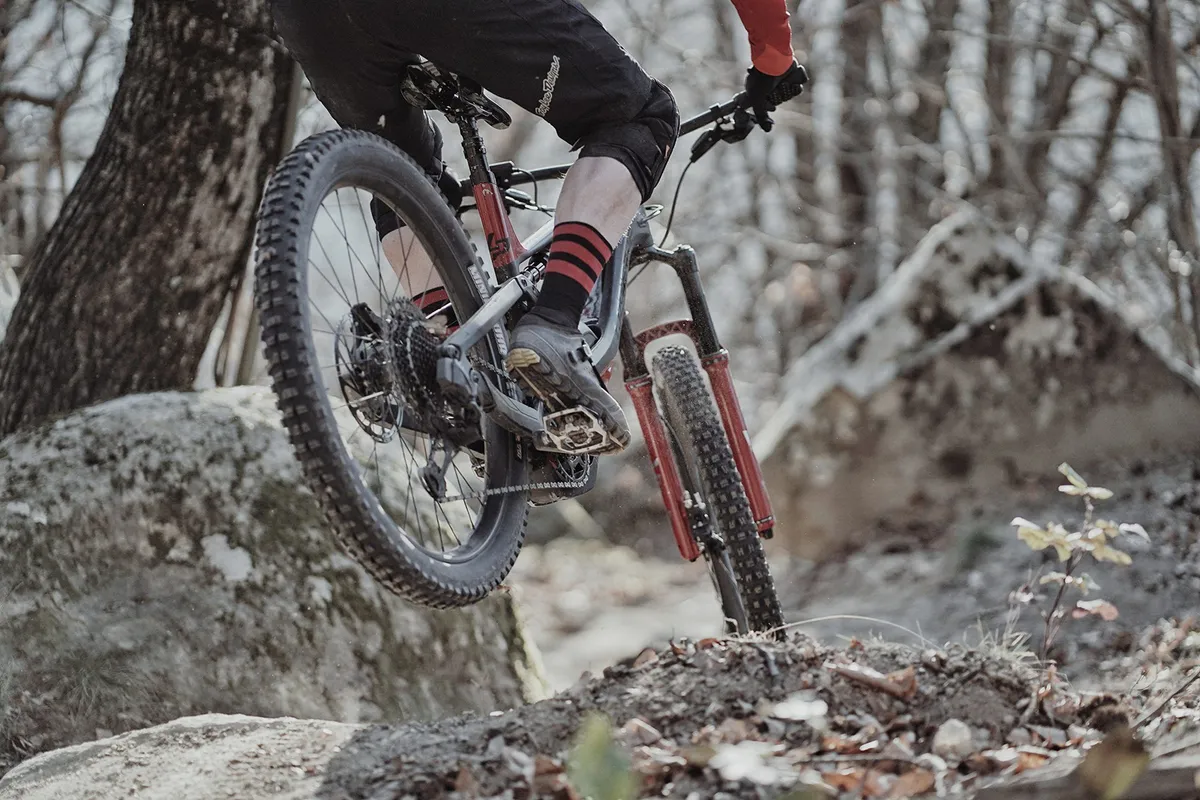
I was also surprised to see the trail-orientated G2 brakes. They’re lighter than the Codes I would have expected, but they’re also less powerful and didn’t cope with prolonged descents where they suffered with the heat – despite a huge 220mm rotor on the front and generous 200mm at the back.
Although power delivery of the motor is good, it’s a very noisy unit. I’m not 100 per cent sure on the mechanics of the noise, but the motor’s internals emit a lot of knocking, like very bad cable rattle on descents. It’s distracting at times and detracts from the otherwise quality feel of the bike and motor.
Lapierre Overvolt GLP2 Team bottom line
Lapierre has built an incredibly capable, well-handling eMTB in the Overvolt GLP2.
The centralised weight theory pays dividends on the trail, with quick and easy handling that makes negotiating technical terrain pretty much as easy as it can be.
There are compromises with this approach, namely the smaller battery capacity, but overall I feel one not worthy of complaint.
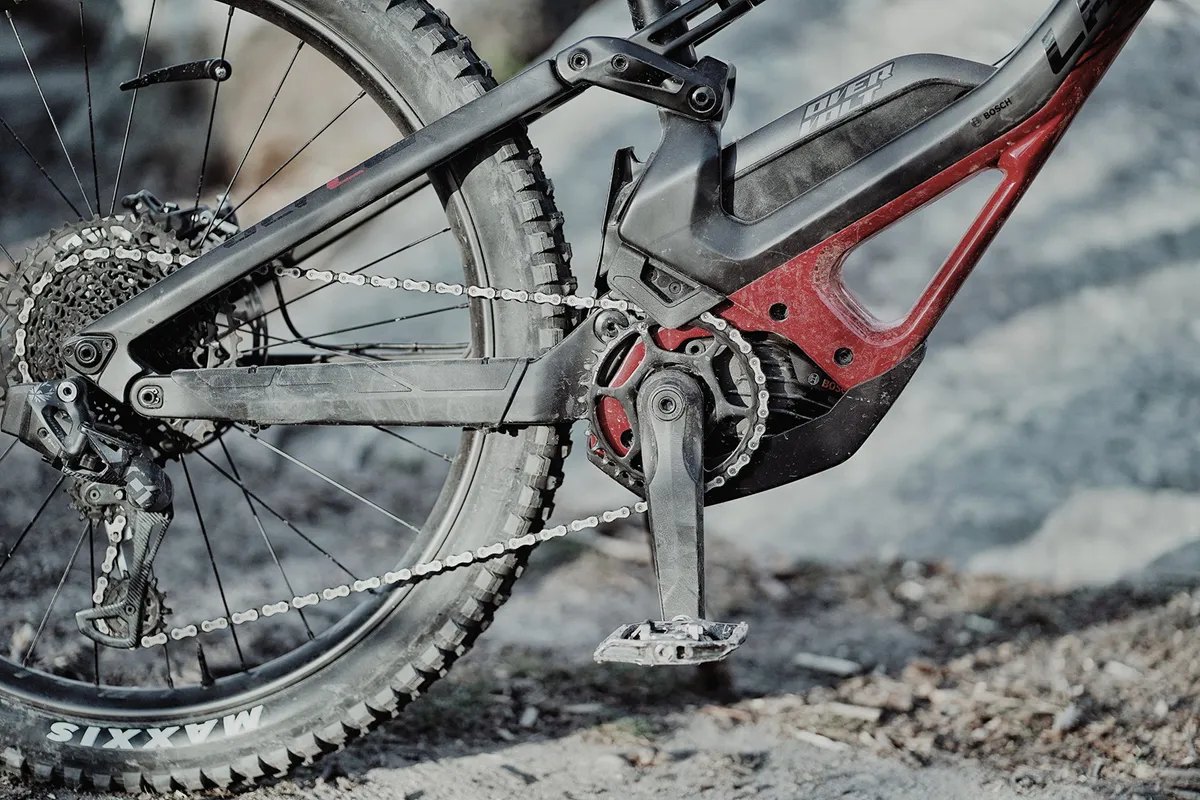
The Bosch motor has some great points, and some not-so. It’s a very natural feeling motor once you’ve negotiated the occasional initial kick from the off, but its noisy rattle is something I’d like to hear an end to.
The low weight of the bike is no bad thing, but areas such as the brakes are compromises I’d rather not see.
Lapierre has proved with the Overvolt GLP2 that eMTBs don’t have to feel like sluggish behemoths and can be as agile and reactive as any ‘normal’ mountain bike.
Product
| Brand | Lapierre |
| Price | €8499.00, £7649.00 |
| Weight | 21.50kg |
Features
| Fork | RockShox Lyrik Ultimate, 160mm (6.3in) travel |
| Stem | Lapierre CNC |
| Chain | SRAM NX Eagle |
| Frame | Carbon fibre, 160/160mm (6.3/6.3in) travel |
| Motor | Bosch Performance CX motor |
| Tyres | Maxxis Assegai 3C MaxxTerra EXO+ TR 29x2.5in (f), Maxxis Minion DHR II EXO+ TR 27.5x2.8in (r) |
| Brakes | SRAM G2 RSC, 220/200mm rotors |
| Cranks | E13 E-spec+, 34t |
| Saddle | Lapierre |
| Wheels | Lapierre eAM+ Carbon rims on Lapierre hubs |
| Headset | FSA Orbit |
| Shifter | SRAM AXS Eagle |
| Cassette | SRAM PG-1230 11-50, 10-42t |
| Seatpost | Lapierre Dropper |
| Grips/tape | Lapierre |
| Handlebar | Lapierre Alloy, 760mm |
| Rear shock | RockShox Super Deluxe Select+ |
| Available sizes | S, M, L, XL |
| Rear derailleur | SRAM AXS Eagle (1x12) |
